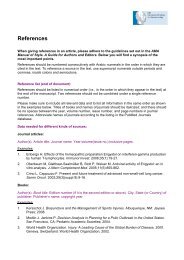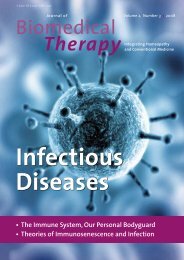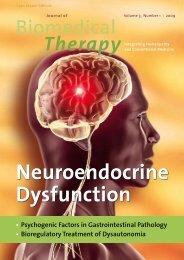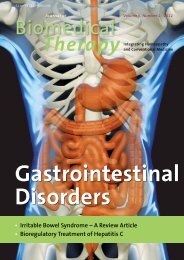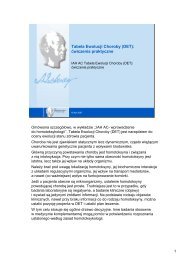Types of Homotoxins
Types of Homotoxins
Types of Homotoxins
Create successful ePaper yourself
Turn your PDF publications into a flip-book with our unique Google optimized e-Paper software.
Chemical poisoning: toxicological criteria<br />
• Toxicity<br />
• Acute lethality<br />
• Sublethal effects on non-mammalian species<br />
• Sublethal effects on plants<br />
• Sublethal effects on mammals<br />
• Teratogenicity<br />
• Genotoxicity/mutagenicity<br />
• Carcinogenicity<br />
© IAH 2007<br />
11<br />
For most chemicals the acute lethal dose is described in pr<strong>of</strong>essional literature. We have to be<br />
aware that not the single lethal dose alone is toxic but also that bioaccumulation is possible and<br />
repeated dosages are added to residual amounts <strong>of</strong> an earlier intake, a lethal dose can be<br />
reached. Think about the bioaccumulation <strong>of</strong> heavy metals like lead.<br />
Toxic effects can be seen on non mammalian species and can have an effect on long term due to<br />
the food cycle. The same is the case for poisoned plants.<br />
The sublethal effects <strong>of</strong> chemicals on mammals are quite well described but <strong>of</strong>ten forgotten in the<br />
patient’s history. Work related intoxications, domicile (industrial or not), chemically treated food,<br />
especially in the long term can cause sublethal intoxicating effects.<br />
Some chemicals can induce consequences in embyological development. In this case the toxicity<br />
in the mother causes deviations in the child. This is not only the case with pure chemicals out <strong>of</strong><br />
the environment but also chemicals or substances used in pharmacology (e.g. S<strong>of</strong>tenon children<br />
in the 60-ties)<br />
Other chemicals have a genotoxicity and are the cause <strong>of</strong> genetic dysfunctions. This has <strong>of</strong>ten not<br />
only physical but also physiological consequences.<br />
Many substances are known to be carcinogenic. They are described in pr<strong>of</strong>essional literature due<br />
to their carcinogenic properties. Also here we see both: the acute toxic doses that triggers cell<br />
dedifferentiation and accumulated dosages that after long term induce the same.<br />
11



